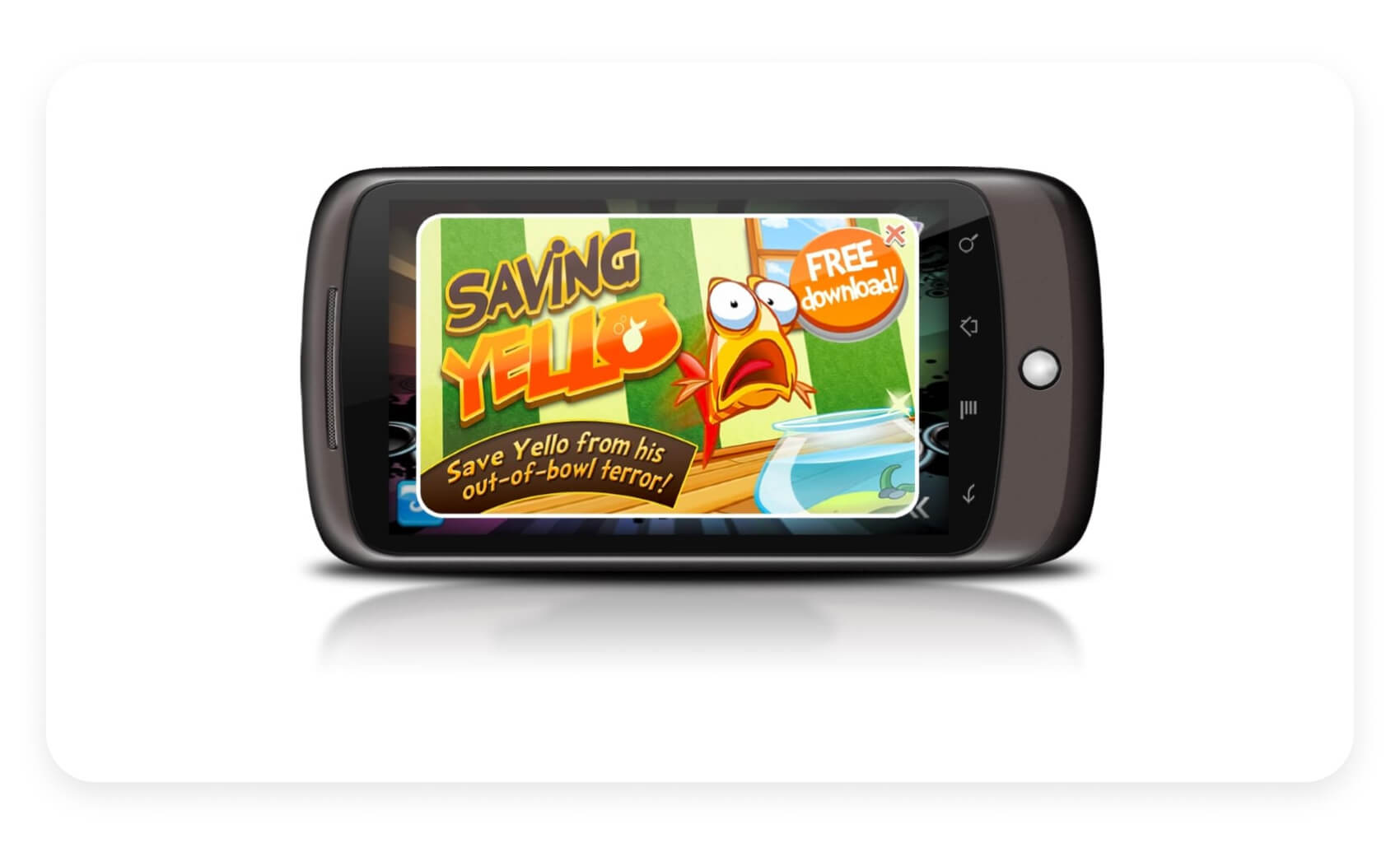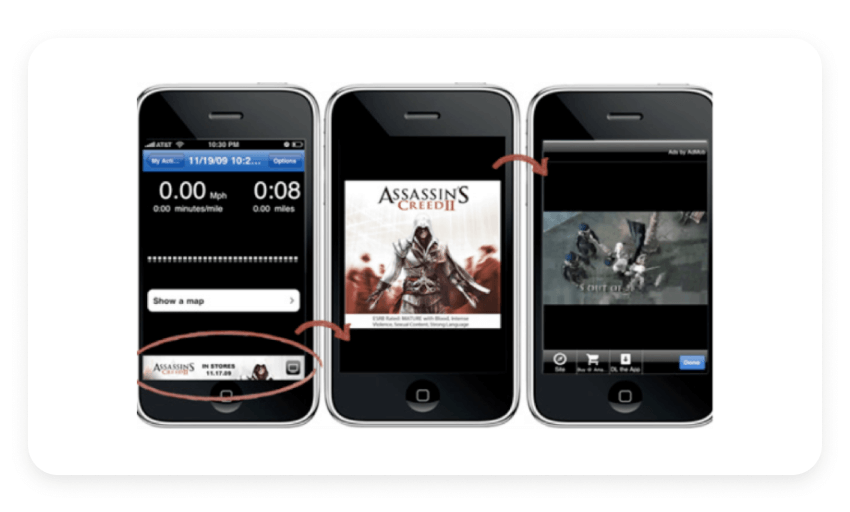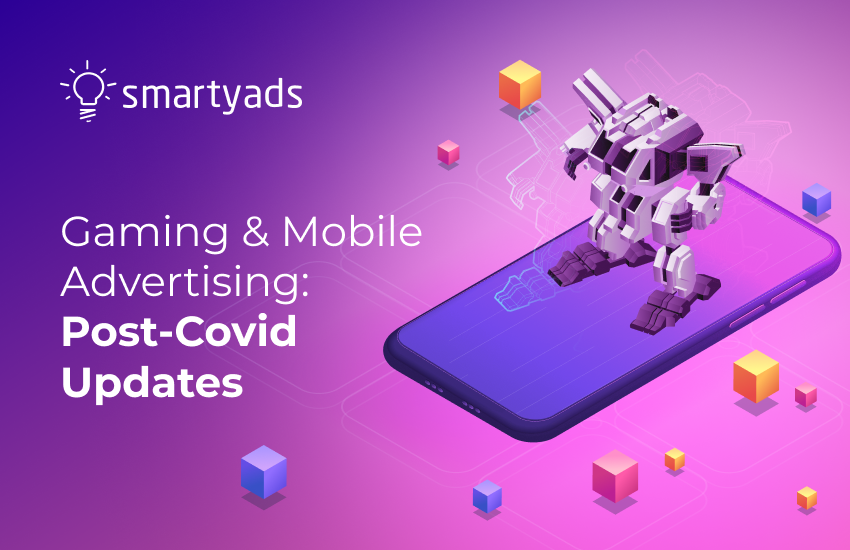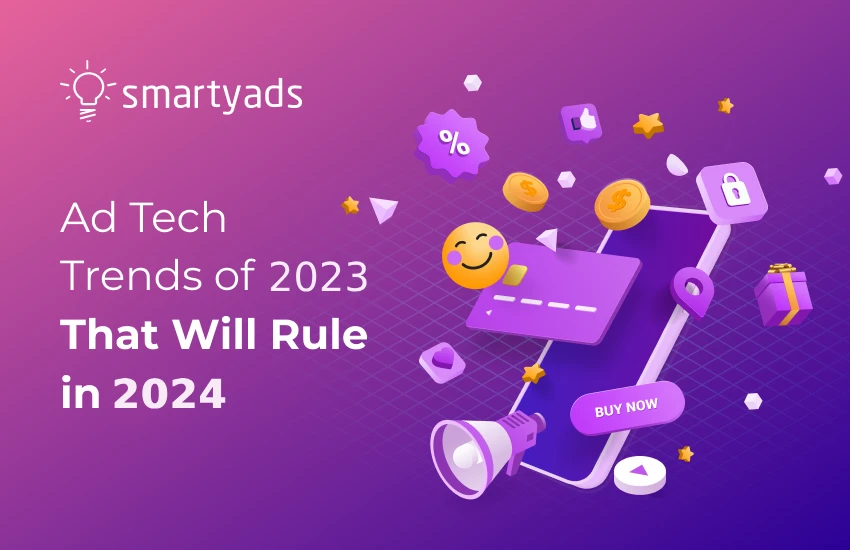Mobile devices are no longer just tools for communication; in fact, about 43% of screen time on smartphones is spent playing games. However, until recently, there was a misconception that the mobile gaming audience is either too small or too niche for big brands to address. Now, this perception has changed.
In this column, Liz Tokareva, SVP, In-house Products at SmartyAds, talks about the growth of in-game advertising - types, trends, and what advertisers need to know to create and maintain effective advertising campaigns.
How the pandemic reshaped gaming & the mobile gaming market
First, let’s take a look at the overall gaming landscape and how it was modified during the pandemic. Over the past 2 years, the market size of the video game industry has grown to $180 billion and 3 billion players. During the pandemic, Verizon reported a 75% increase in gaming traffic, Comcast reported a 50% increase in in-game downloads and Twitch game views increased by 195%.
Games are usually associated with PCs and consoles; however, most marketers now see mobile gaming as a real growth opportunity and view programmatic in-game advertising as the most sustainable advertising niche.
The beginning of the COVID-19 pandemic in 2020 was a turning point for the gaming industry. Technology and industry standards began to more actively develop. Millions of gamers began receiving quality targeted in-game programmatic advertising, which set the stage for changing mobile media buying habits. A recent report showed that, by 2025, 93% of advertisers intend to run in-game ads.
The new, post-pandemic rules of life have influenced gaming habits, causing mobile game users to behave differently. Users spend more time playing, and their games highly depend on their location and demographic profile.
For example, new mobile game players (who started playing in 2020 after the beginning of the pandemic) are significantly younger than pre-pandemic players. New players brought in after 2020 show different behaviors and differ in genre preferences, engagement and inclination to play non-mobile games. New mobile gamers still prefer to play alone, but they are more likely to interact with both multiplayer and social features.
New players are also more open to in-app purchases and, as a result, spend more money on the game than the rest of the players. So, how do you get the attention of these players? The programmatic can help.
How programmatic helps advertisers boost in-game marketing
Drawing attention to the game is not easy, because users choose from a huge number of mobile games. Users also tend to download and play games they are familiar with, making it even harder for brand-new games to get attention. It is worth pointing out that in-game advertising is not only suitable for app developers who want to promote their new apps. Brands that need to raise awareness and showcase any product or service also actively place ads in the games, as this niche attracts all kinds of valuable audiences.
On mobile, gaming is already the top spender, accounting for 50% of the industry's total ad spend. The competition here is very tough. It is not enough to advertise in front of an audience that is tired of advertising. Instead, advertisers need to run campaigns with suitable ads delivered to the right users at the right time. Programmatic mobile advertising helps with this by showing in-game ads to the audience that needs them, exactly at the right time and screen.
To run a successful advertising strategy for mobile games, you need to know your target audience. It all starts with understanding who the players are - the categories of gaming apps they use, their motives, and their overall digital portraits. This will help you to attract the most valuable audience when you apply targeting options on advertising platforms.
How to keep players loyal
Mobile games only show a 20-29% retention rate on the first day. This percentage drops to 4-7% on the 7th day and 1 to 3% on the 28th. Retargeting campaigns that run parallel with user acquisition ones will help prevent and minimize churn.
With retargeting campaigns, you can also increase engagement by reminding users of the benefits, providing them with timely offers, or showcasing in-app purchases that will allow them to progress in the game. As a result, mobile publishers can retain users in the games, prolong their lifetime value and keep them engaged for a long time.
What in-game mobile ads you can use
Advergames
Generally, the promotional game's storyline, gameplay, and environment go a long way toward promoting the brand or product. Playable and rewarded ad formats belong to advergames, which are supported in the apps and are very suitable for in-game advertising.
For example, Playable Ads pop up on the screen during the game, or when the user finds them in the game menu. The user initializes the ad and plays a mini demo game, then returns to the gameplay, or taps to download the full version of the game that was advertised.
The second option is called Rewarded Video Advertising. The user sees an opportunity to exchange views for rewards in the app. Rewarded mobile video is initialized on the user's device and fills the entire screen. The rewarded ad ends after 5-15 seconds and the user returns to the game/app.
Static banners
Static banners are the most affordable and customary way of advertising in apps, including games. Rich media banner ads, expandable banners, and banners with in-build media elements are all qualified as banner ad formats that can be used to advertise in games.

Video ad formats
In-game video ads come in a variety of formats; for example, they can be skippable and non-skippable. The player often sees thumbnails and may or may not interact with ads. In this case, it is crucial to intrigue the user enough to play the video. The thumbnail must be convincing enough for them to take a break from the game.

Most users won't stop playing a game to watch a video if it doesn't provide any value. Therefore, the video should captivate the audience, encourage further interaction and not annoy the player.
Dynamic In-Game Advertising (DIGA)
The first three formats are supported on all major programmatic platforms. However, DIGA is a relatively new format but, these days, it is also supported on many programmatic platforms. Therefore, every brand now has the opportunity to experiment with it.
DIGA advertisements appear on virtual objects inside of the 3D game environment: billboards, posters, and bus stops. Ad networks can deliver real-time, dynamic, in-game ads using an ad server, just like banner ads are placed on websites and blogs.
One of the advantages of DIGA is the ease of planning and launching a campaign. DIGA allows brands and advertisers to run time-critical promotions using the same familiar CPM model. The advertiser only needs to provide standard IAB creatives to integrate ads into games.

Static ads seamlessly and realistically integrate into game elements in the places where players expect to see them in the real world — on billboards, in a mall, etc.
5 hacks of how to advertise better with in-game formats
Choose suitable ad units for the game
There are several types of ad units for games. For example, offerwalls are great for strategies, while rewarded videos are great for match-3 games and puzzles.
Advertisers need to think about which ad units work best for each game.
Optimize your campaigns
It is essential to change your advertising strategy in time to understand how best to balance user experience and advertising revenue in games. Advertisers need to think about placement, frequency and limits and replace different types of ad units on time.
Optimize your campaigns based on audience engagement and response. It is essential to analyze information, draw the correct conclusions, launch new or improve existing campaigns.
Segment your users
Advertisers can use segments to tailor ads to different types of users. For example, show fewer ads to users who regularly buy something in the game or show ads during the first 3 minutes to users who play only 5 minutes.
Tailor ads to each segment
Innovation and continuous optimization of creative strategy create an unforgettable advertising experience for users. Creating unique and high-performing ad sets requires a lot of research and analysis to identify market trends and test audience response to creatives. This is the only way to determine which ads have the desired effect and improve results.
Not only do advertisers require numerous, unique, creative ideas that showcase gameplay, characters or a story, but also multiple variations of each ad to appeal to every segment of players.
There is no universal receipt. Different creatives perform better or worse depending on which user group sees them and other important factors like geo, ad location in the game and so on. The only way to keep advertising effective is to test and analyze the results.
Don't interrupt gameplay
Advertising should not irritate the player and prevent them from enjoying the game. Therefore, advertisers mustn't interrupt gameplay.
You should follow natural pause patterns. Don't kick a player out of the game if they click on an ad (accidentally or intentionally).
If the ads don't annoy the players and distract them from playing, you'll get better brand loyalty and, therefore, the likelihood of a purchase.
Gaming industry trends advertisers should focus on in 2022
IDFA sets new challenges
Apple's changes to IDFA (the identifier for advertisers) usage significantly impact mobile game advertising. Therefore, it is crucial to adapt to new changes and expand your user acquisition strategies.
Apple understands that attribution needs cannot be completely ignored, so the company came up with a solution, called SKAdNetwork.
SKAdNetwork allows ad networks to collect anonymous user data based on which application is being attributed.
Development of microtransactions in video games
The global online microtransaction market will grow from $59.49 billion in 2021 to $67.60 billion in 2022. Microtransactions allow players to purchase in-game features, such as costumes, that will display on their playable characters or custom "skins" for selected weapons.
Some people say that microtransactions deprive players of the gaming experience because gamers do not develop but buy progress. However, microtransactions will continue to be used in games due to their sheer size and steady income.
Therefore, advertisers need to focus on microtransactions in the game, their benefits and opportunities.
Development of new revenue models
Games revenue models are now actively evolving, affecting the life cycle of games and the game mechanics themselves. Revenue models, such as the free-to-play model, continue to gain momentum as they utilize microtransactions across multiple franchises. Advertisers are also adapting and trying to deliver maximum value as consumer behavior changes.
To wrap it all up
In-game mobile advertising is at a turning point. It is actively growing and attracting tremendous advertising budgets. Advertisers should pay attention to in-game mobile advertising because the number of players is increasing and there are more opportunities to interact with them.
This means that advertisers will have a better reach for their ad campaigns. With a larger number of available ad formats, advertisers will also be able to interest users in non-standard ways, providing user-friendly, engaging and less irritating ad experiences. This way, advertisers will foster brand loyalty and increase their campaign performance at the same time.




